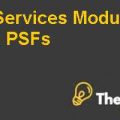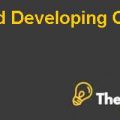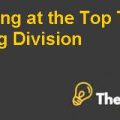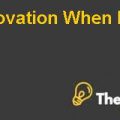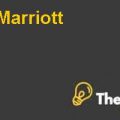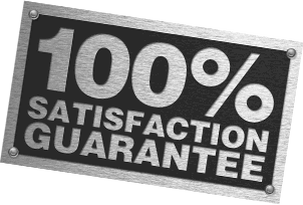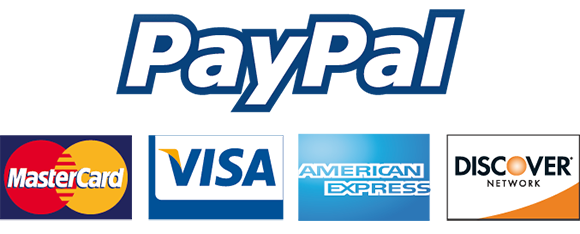
Requirement 1
Problem
The Automotive Division of Timken having concern on the transfer pricing policy with Steel Division that are not allowing steel transfer to this division for its excess attachments with the market, for bearing extra cost. This concern will be well resolvedby using the approach of” Balance Score Card”. This will be a fruitful of the organization as well as division.
Balance Score Card Approach
This approach is useful for developing Strategic decision of the management, with using the informationof the business regarding external and internal wings. External criteria checked of customer satisfaction and business perspective and internal criteria checked financial perspective and organizational Capacity. By using this approach it will come up with effective solution for the entire situation. The following matters are discussed with its relevant priority material
Financial Perspective
Objectives
Considering the Internal Sales Price of the Steel Division Product which aim to follow transfer pricing on the market based approach
Measures
The divisionhasthe advantages over the market as compared to inter-company sales price, by assuming that market having good opportunities regarding price sensitivity of steel. This is competitive edge over all the process and it also prospers the profitability of the organization. It should go to the market based purchasing of the steel as per the case scenario. On the other side Steel Division also having issues regarding the current market prices. Directionshould go for the market sentiments. Financial Health is not consistent as per the Exhibits B, C and D. There should be an adequate policy on that. Balance Sheet of the 2002 is showing losses in the comprehensive income which are increasing from the preceding year and it is not a good sign for the Company. The recommendation for it, is to go with purchasing from the market as buyers.
Customer Perspective
Objective
Matters of the customer preference regarding the quality of Steel product and their performance
Measures
The customeralways focuses on the quality material and Steel Division having dominant supplier of the steel products. If it is considered purchasing bearing steel from the market, then it will impact on the quality of the material. It should be more like win-win,if viewed from the customer side. As per the scenario it should also consider some other factors which are related to customer relationship and will create market image.
Internal Capacity Perspective
Objective
Build an effective production line which covers the matter of the cost measurements and their relating factors, ofwhich are bottle neck for the organization.
Measures
Now the division has to focus on their internal reality on the product operations. The transferring department is working on underutilization, which gives burden on both side sales external and internal. The organization will improve this situation at first and then it moves toward improving internal sales. If go to the market assumption, then it tends to lower profits for steel division.
Offering discount with support of selling and administration will also be reduced when it should go for the market base approach, but it will effect on the profitability of the organization.
Although the performance of the environment is getting better and better as in Exhibit B, C and D but the company has to focus on the cost measure requirements, provide benefits to the internal client to stop external sales. To take measures that improve Profitabilityand the atmosphere of the organization which coveredlarge areas of the world. Transfer pricing with market based principle is still in the consideration because it's giving some advantages of the division. Market Based Pricing is considered with competitor based pricing while cost based pricing is considered with actual cost and it should be notified in the decision criteria.
Learning & Growth Perspective
Objectives
Enhancing the performance of the entire company with new innovative decision which reflect on their climate.
Measures
Growth perspective is very essential for any organization, because it creates a difference inthe entire industry. Transfer Price will be an effective way for the division, but the circumstances are not meeting market based approach. It should look out for different pricing policies which will effectas a better solution for the organization.
Develop a model for three strategic business units under the approach of Balance Score Cards which is a good recommendation for this entire problem. The Recommendation are annexed to this report in Exhibit A
Conclusion
Timken consideration regarding Automative Division Decision is valid with the assumption that market quote lower price. Therefore problems will be solved with following balance score card approach and recommendation on the behalf of this approach. These are the highlights of the concern which Timken has catered as soon as possible.
Requirement 2
Minimum Rule
Minimum Rule means lowest pricing among all the competitor of transfer pricing. It's effect on the both sides of Sales either external or internal. The usefulness of minimum rules is for the large production criteria of where at large level of work are doing................
This is just a sample partial case solution. Please place the order on the website to order your own originally done case solution.
In December 2003, the management team in the automotive and steel companies Timken Corporation, headquartered in Canton, Ohio, were generally agree that the market price is an appropriate tool to evaluate the internal transfers of steel. At the same time, both the management team reservations about implementation details of transfer pricing market in its current form. Asks students to assess whether the policy of transfer pricing for steel transfer inhibits automobile division exercise its market power as a buyer of high quality steel bearings. Also asks students to comment on the usefulness of minimum rules, evaluate the company's policy Timken market transfer pricing rules for steel, and compare the cost-based transfer prices to market prices. "Hide
by Stephen Reichelstein, Nicole Bastian Source: Stanford Graduate School of Business 13 pages. Publication Date: December 28, 2004. Prod. #: A190-PDF-ENG

